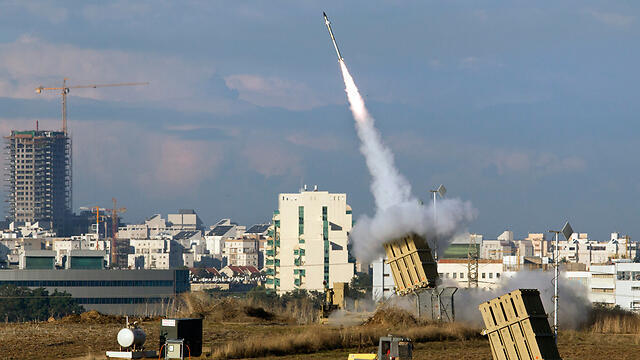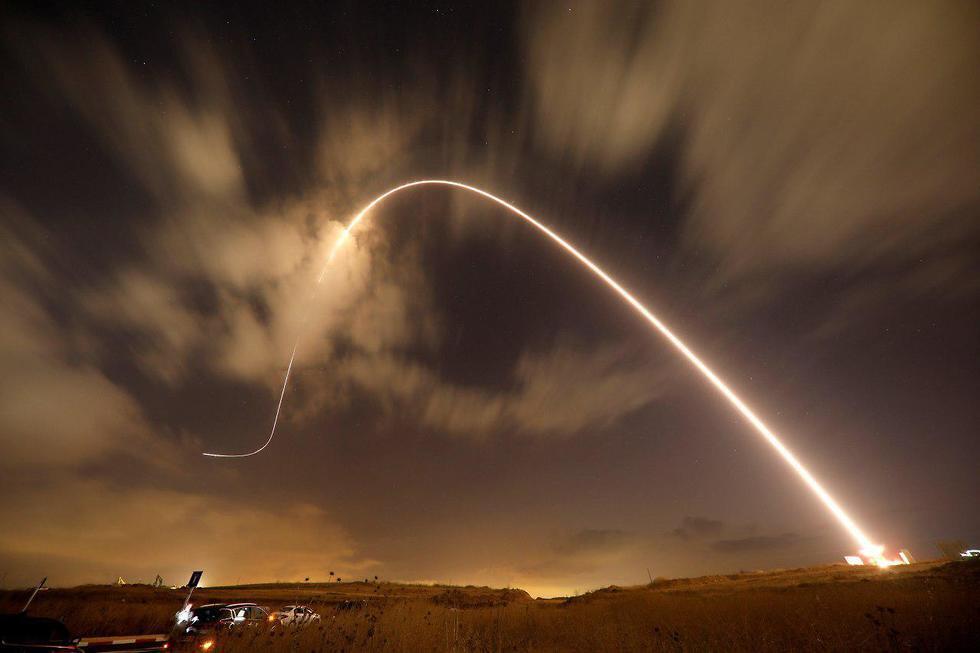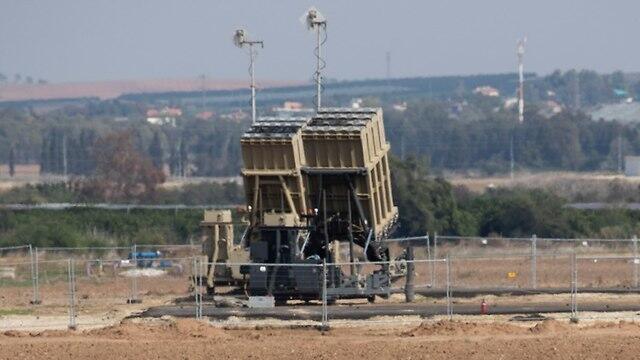Getting your Trinity Audio player ready...
The United States Army has asked Congress for $373 million to buy two batteries of the Israeli-made Iron Dome missiles defense system, which has been protecting residents of southern Israel from Gaza rockets for over a decade.
and Twitter
The Americans rarely buy weapons systems from other countries, mostly due to national security considerations but also because the US normally has the technological advantage. While Israel has sold the US technological systems in recent decades, this would be the first time Jerusalem sells Washington a full weapons system.
According to American news site Inside Defense, the US Army wants to acquire the two batteries off-the-shelf from Rafael and seeks to have them delivered by 2020.
The batteries will include 12 launchers, two sensors, two battlement management centers and 240 interceptors.
While the Iron Dome batteries are stationed inside Israel's borders to defend its citizens from rockets fired from Gaza, the Americans plan to station the batteries abroad, to defend its troops in sensitive areas around the globe.
The US Army has been looking for several years for a system that could protect its troops from rockets, cruise missiles, drones, mortar shells and other threats on the battlefield. In the past, the US tried to build interception systems based on American-made air-to-air missiles—AIM-120 AMRAAM and AIM-9 Sidewinder—but the costs were too high, and these systems failed to meet all of the Army's operational needs.
This led the Americans to decide to acquire the Iron Dome system from Israel, in what is shaping up to be one of the fastest arms deals in history. Due to the urgency, it appears the Americans also plan to acquire the Israeli-made radar for Iron Dome, the ELM-2084 Multi-Mission Radar (MMR), which is manufactured by the Israel Aerospace Industries (IAI), since adjusting the American radar to Iron Dome would delay the system going into service.
The Americans have already tested the Iron Dome system. In September 2017, Israel loaned the US an Iron Dome battery, which was flown to the missile range in White Sands, New Mexico, where it successfully intercepted different types of threats that were launched at it; the Americans were impressed by the high interception rate.
According to Inside Defense, Iron Dome is also significantly cheaper than other American systems. For example, the system based on the AIM-120 AMRAAM costs $12 million for each launcher and $800,000 for each interceptor missile. The Iron Dome, meanwhile, will cost the Americans $1.37 million for each launcher, $150,000 for each interceptor missile, $4 million for the battlement management center and $34.7 million for the MMR.
"The Iron Dome system provides the best value to the Army based on its schedule, cost per kill, magazine depth, and capability against specified threats," Army acquisition executive Bruce Jette wrote in his report to Congress. "Additionally, the Army assessed the key benefits of the Iron Dome system as its magazine depth of 20 interceptors per launcher and the proven capabilities of the Tamir Missile. The fielded interceptor is battle tested and Israeli Qualified."
According to the report, the US Army is asking for $289.7 million for the deal in the current fiscal year, and $83.8 million in the next fiscal year. In addition, the Army is asking Congress to invest an additional $1.6 billion by 2024 in integrating the Iron Dome's launcher and missiles with its own missile defense system IFPC Inc 2-I, which could indicate the Army plans to acquire more of Iron Dome's Tamir missiles in the future.
While the Iron Dome system was developed by Israel, since 2011 the US has invested $1.4 billion in its development and its acquisition for the Israel Air Force.
Raytheon, which manufactures the Patriot missile system, has partnered up with Rafael to produce the Iron Dome system, with over 50 percent of its components manufactured in the US, in accordance with US Department of Defense requirements in return for the funding. Raytheon is expected to also play a major role in the production of the Tamir missiles for the US Army.




